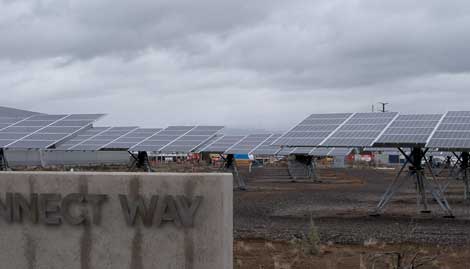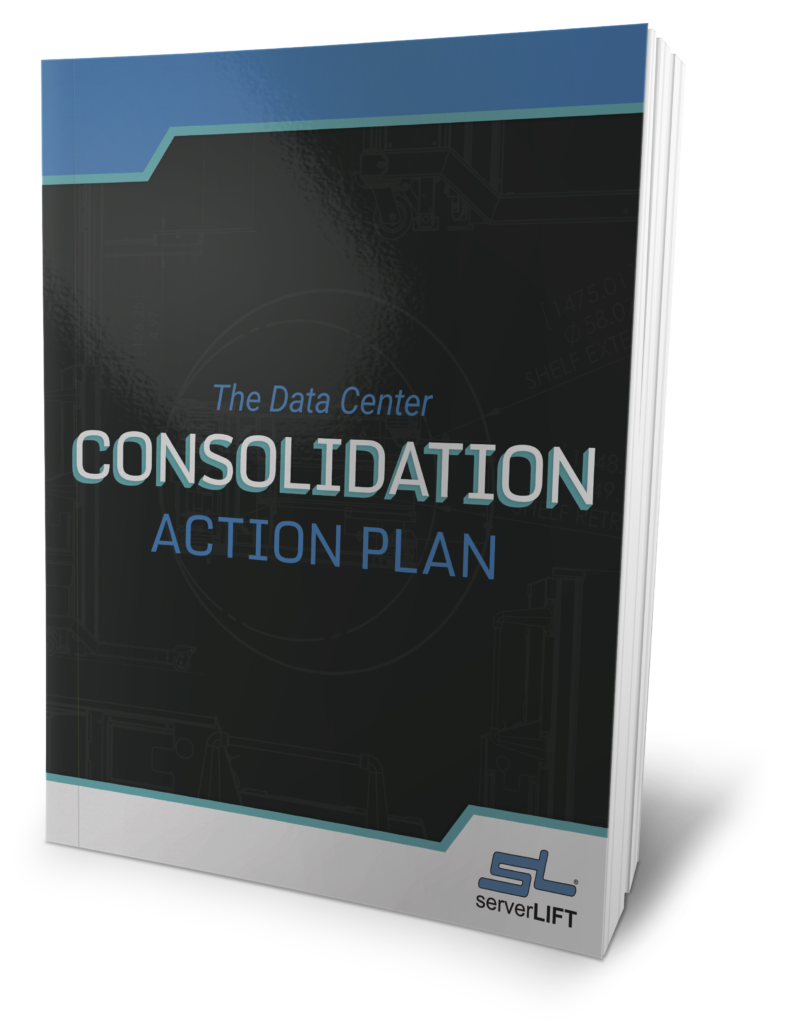Um data center verde desenvolvido com painéis solares:
Vale a pena todo o hype?
Solar power is quickly becoming the hot new topic for the green Centro de dados, e melhor operações de data center. Nothing else quite shouts “I’m going green” like installing a couple hundred acres of painéis solares ao lado de seu poder faminto, carvão consumindo Centro de dados. Few things are more capable of blatantly making you look like you’re environmentally conscious. In an age where everyone is trying to care about the planet, it seems that installing a solar array is the industries way of doing it. But how effective and efficient are these painéis solares verdade?
Apple, Facebook, Cisco, Google, EBay e Emerson Network Power deram um salto no mercado verde bandwagon. Faz todo o sentido na superfície. É o melhor recurso renovável. O sol brilha, o faz todos os dias, e continuará a fazê-lo todos os dias por milhões de anos. Cada watt desviado para um Centro de dados não tem absolutamente nenhum efeito sobre a luz do sol que todos nós recebemos hoje ou que receberemos amanhã. Então, se você está localizado em climas mais ensolarados, certamente não é um acéfalo, certo?

Mas faça isso matrizes solares faz sentido, dada a economia atual de energia solar and the volume of power required to support a modern data center? James Hamilton of Amazon Web Services, who often presents on data center economics at industry conferences, challenges the wisdom of solar in a new blog post.
"Eu amo energia solar, mas refletindo cuidadosamente sobre alguns aspectos importantes Centro de dados implantações de energia solar, Estou realmente desenvolvendo sérias reservas de que esse é o caminho para reduzir o impacto ambiental do data center ”, escreve Hamilton. "Simplesmente não consigo fazer a matemática funcionar e me pergunto se essas grandes fazendas solares estão realmente entre uma má idéia e um marketing puro, onde o impacto ambiental é puramente óptico".
Solar power isn’t widely used in data centers because it requires a huge installation of panels to produce even a small fraction of the amount of energy required by most facilities. While some arrays, like the ones located at Facebook’s Oregon Facility, efficiently provide power for office space rather than the actual servers, it still seems to be a bit of a marketing and PR ploy. Even when considering Apple’s proposed monster 20 megawatt, 171 acre, facility in North Caroline, the output just doesn’t add up. Hamilton recently estimated that all of those panels on their 171 acres, only contribute around 3.2 MW to the data center’s power requirements; requirements that Hamilton calculates to be around 78 MW. That’s a measly 4%, which really is nothing at all.
Então, quais são as economias da energia solar do ponto de vista de marketing? Provavelmente não é um acidente que, como se fosse da noite para o dia, matrizes solares apareceu magicamente depois que o Facebook levou uma surra de relações públicas do Greenpeace, que lançou uma campanha de alto nível "Unfriend Dirty Coal" para protestar contra o baixo volume de fontes renováveis no fornecimento de energia para suas instalações em Prineville. Até a Apple parecia incapaz de apaziguar o Greenpeace, que usou o lançamento do seu “novo iPad” para agredir a empresa por confiar na energia proveniente de carvão da concessionária local.
"A Apple poderia aplicar o espírito inovador tão evidente em seu iPad mais recente ao seu iCloud, alimentando-o com energia renovável como a eólica e a solar", disse o analista sênior de políticas do Greenpeace, Gary Cook. "Ou poderia continuar atrás do restante da indústria, mantendo o carvão, uma tecnologia do século XIX que envenena as comunidades e o clima."
Like Hamilton, Cook argues that the solar array is inconsequential given the overall energy used by Apple. “While Apple has been more than happy to draw the media’s attention to how large the solar farm is, it has kept its lips stapled firmly shut when it comes to just how much coal will still be required to power the cloud.”
So, why the enthusiasm for solar? It certainly isn’t making an impact on the energy bills and greenhouse emissions. And definitely isn’t impressing Greenpeace by any means. So it seems all that is left is purely the marketing and image value. Going verde makes companies look good. They can put a check in the cute little “green” box. And customers, consumers, and law makers think they care.











